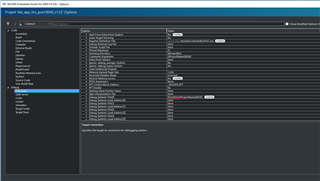nrfutil settings generate" gives different CRC value from what bootloader calculates. Besides, I used JLinkExe savebin to dump application from DUT and the calculated CRC matches bootloader's value. It looks like nrfutil is problematic.
macOS 10.14
SDK15
nrfutil version 4.0.0
Segger Embedded Studio 3.5.2
Attached files
https://drive.google.com/open?id=1g2Eo4dLErHefG9S3-j3Nha7JTjOGtNq7
Note:
1. app.elf & app.hex are generated by SES
2. setting_page.hex is generated by:
nrfutil settings generate --family NRF52 --application app.hex --application-version 3 --bootloader-version 2 --bl-settings-version 1 --no-backup setting_page.hex
3. app_dump is by JLinkExe savebin app_dump 0x26000 0x00010698
4. nrfutil settings display setting_page.hex shows:
Bootloader DFU Settings:
* File: setting_page.hex
* Family: nRF52
* Start Address: 0x0007F000
* CRC: 0x1AEE538E
* Settings Version: 0x00000001 (1)
* App Version: 0x00000003 (3)
* Bootloader Version: 0x00000002 (2)
* Bank Layout: 0x00000000
* Current Bank: 0x00000000
* Application Size: 0x00010698 (67224 bytes)
* Application CRC: 0x243A6A75
* Bank0 Bank Code: 0x00000001
5. crc32 app_dump gives 758d7b9e, which is the same as what I see when debugging bootloader
6. Verify in SES, both by elf or intel hex will pass




